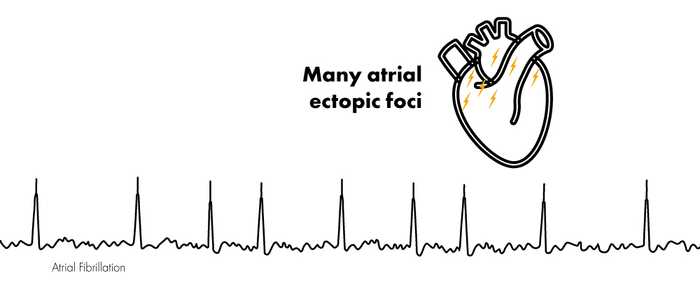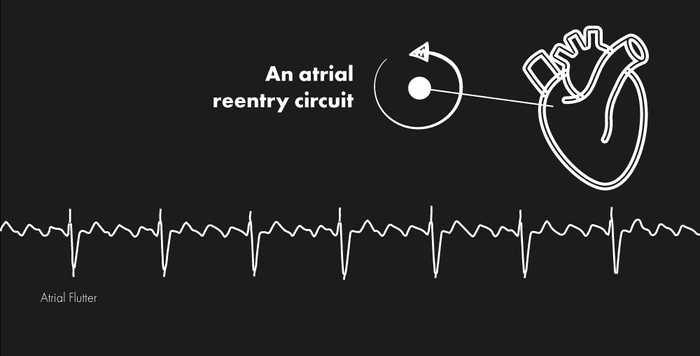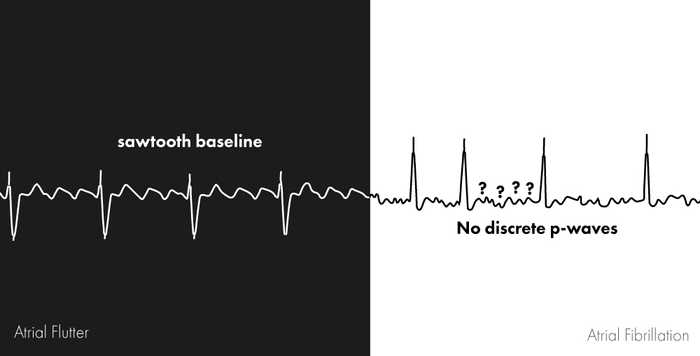NUCLEOTYPE
Atrial Fibrillation vs. Atrial Flutter
April 10, 2020
Both atrial fibrillation and atrial flutter represent arrhythmias that arise from ectopic foci originating in the atria. They are easily differentiated based on a few criteria seen on an electrocardiogram (ECG) or cardiac rhythm strip:
- R-R Interval (regularity)
- P-wave from atrial depolarization
Although at first glance, both of these electrocardiograms or rhythm strips may look similar, their underlying differences stem from the etiology of atrial depolarization and subsequently conducted QRS complexes.
In cases of atrial fibrillation, the ectopic atrial focus may stem from anywhere in the atria form erratically depolarizing foci. Some of these electrical impulses are conducted down to the ventricles and some are not. This erratic behavior of atrial depolarization is what leads to the classic, “irregularly irregular” R-R interval seen on the ECG.
In atrial flutter, atrial depolarization typically occurs from a single atrial focus caught in a reentry circuit. Because this depolarization originates from a single focus, you can expect the conducted QRS complexes to occur at regular intervals (even though not all atrial action potentials are conducted down to the ventricles).
This is one of the differentiating factors between atrial fibrillation and atrial flutter. It’s that atrial fibrillation is irregularly irregular and in atrial flutter, R-R intervals occur at regular intervals - in the most classic case. However, when atrial flutter occurs with aberrant conduction, you may also see R-R intervals occurring irregularly.
Remember that this regularity/irregularity in the R-R intervals is the result of how atrial action potentials originate. This leads to the second differentiating characteristic between these two arrhythmias. In atrial fibrillation, there is a lack of discrete p-waves, because of the erratic fibrillatory depolarization that occurs within the atria. This is in comparison to the p-waves seen in atrial flutter, classically present as rapid atrial depolarization occurring at approx 300 bpm, often described as “sawtooth”. This sawtooth pattern is the result of atrial activity around a reentry circuit which subsequently conducts action potentials to the ventricles.
Clinically, patients who have these underlying arrhythmias may present similarly. In fact, complications of these arrhythmias and management and of these patients are also very similar - but not the discussion of this article. Regardless of these similarities, the incidence of atrial flutter is significantly much lower than that of atrial fibrillation, despite also sharing similar etiologies (thyrotoxicosis, pulmonary embolisms, pericarditis, sinus node dysfunction, etc.).


